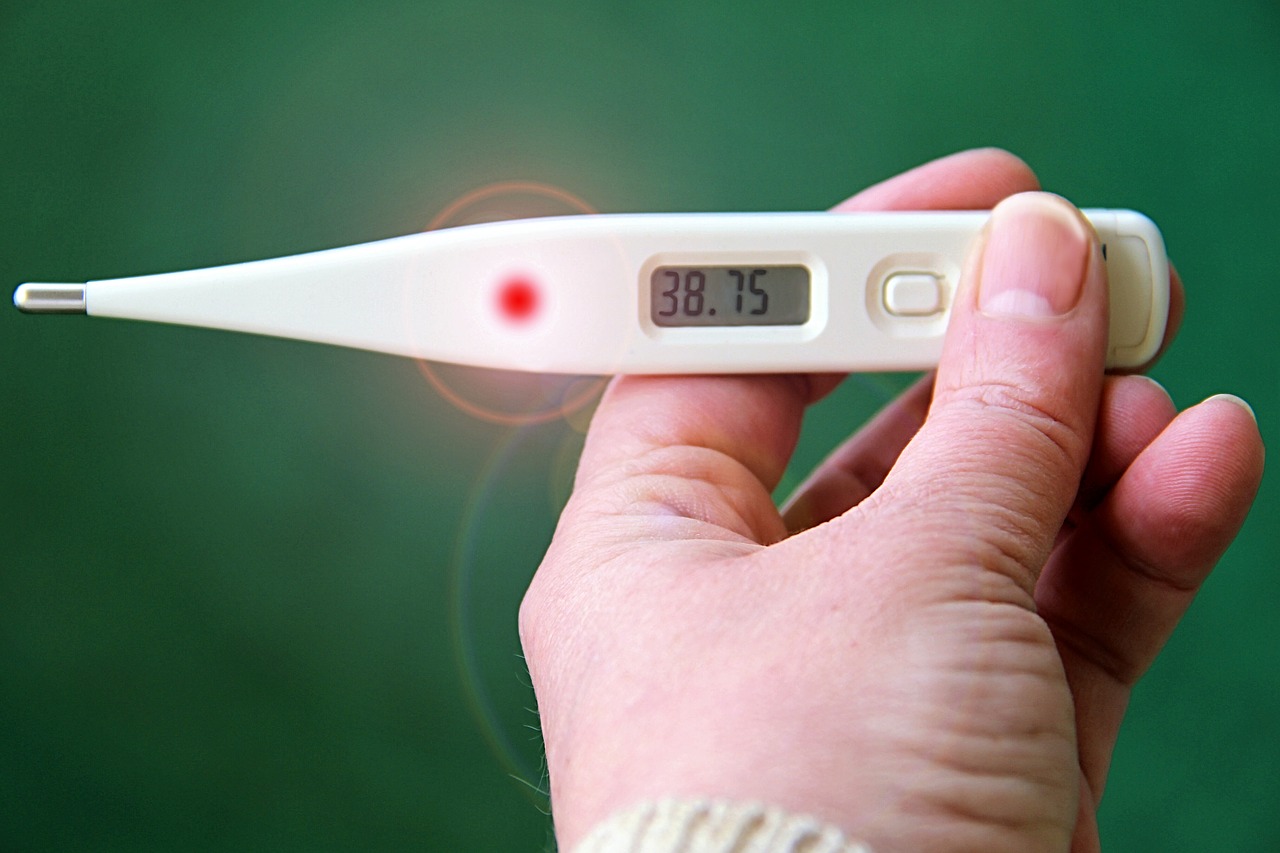What are NSAIDs?
Non-steroidal anti-inflammatory drugs (NSAIDs) are a collective class of compounds widely used in several different types of indications. The drugs under this class have effects ranging from analgesic, antipyretic, anti-inflammatory, cardio-protection, with varying levels of effectiveness. Some are also being used for cancer chemoprevention. These are one of the most commonly available OTC (over the counter) drugs.
The most common of them include paracetamol, diclofenac, and aspirin. They are sometimes, also referred to as non- narcotic, non-opioid, or aspirin-like analgesics.
How do NSAIDs relieve pain?
They predominantly act on peripheral pain mechanisms, but also in the CNS to raise the pain threshold.
The effect elicited was first noticed by Vane and his coworkers in 1971, that aspirin and some NSAIDs blocked prostaglandin (PG) generation. PG is known to induce hyperalgesia (high degree of pain). This modulates the transducing property of free nerve endings. Such stimuli that normally do not elicit pain can do so.

NSAIDs do not affect tenderness caused by direct application of PG but block the pain sensitizing mechanism induced by common mediators such as bradykinin, TNFα, interleukins (ILs), and other algesia producing substances primarily by inhibiting COX-2. This is the main peripheral action of NSAIDs. They have important central actions in the spinal cord and brain. Both COX-1 and COX-2 are expressed in the spinal cord under basal conditions and release PGs in response to peripheral pain stimuli. NSAIDs do not change the sensory modalities perception other than pain. They are particularly effective when inflammation has caused peripheral and/or central sensitization of pain perception.

In contrast to morphine and other opioid analgesics, they do not depress CNS, respiratory system, do not show any additive effect, have no abuse liability, and are weaker analgesics (except for inflammatory pain). This class of compounds is ineffective in the case of neuropathic pain.
Read about Opioid Analgesics: Codeine, Morphine, Pentazocine, Tramadol
Different Classes of NSAIDs
NSAIDs are majorly grouped into different classes based upon their chemical characteristics. They are segregated into different categories based upon the target specificity, preference, and duration of action on COX-1, COX-2, or both. Most NSAIDs are reversible, competitive, active site inhibitors of the COX enzymes. The tables given below classify the drugs accordingly.
Short-acting NSAIDs (half-life < 6 hours)
| NSAIDs | Half-life (hours) |
| Ibuprofen | 1.6~1.9 |
| Ketoprofen | 1.8 |
| Diclofenac | 2 |
| Indomethacin | 4.5 |
| Etodolac | 6~7 |
Long-acting NSAIDs (half-life >12 hours)
| NSAIDs | Half-life (hours) |
| Celecoxib | 11 |
| Sulindac | 14 |
| Naproxen | 12~15 |
| Nabumeton | 24~29 |
| Piroxicam | 30 |
Nonselective COX inhibitors (Conventional NSAIDs)
| Chemical class | Examples |
| Salicylates | Aspirin, diflunisal |
| Pyrazolone derivative | Phenylbutazone, Oxyphenbutazone |
| Indole derivatives | Indomethacin, Sulindac |
| Propionic acid derivatives | Ibuprofen, Naproxane, Ketoprofen, Flurbiprofen |
| Anthranilic acid derivative | Mefenamic acid, meclofenamate |
| Aryl-acetic acid derivatives | Diclofenac, aceclofenac |
| Oxicam derivatives | Piroxicam, Tenoxicam |
| Pyrrolo-pyrrole derivatives | Ketorolac |
| Pyrancarboxyl acid | Etodolac |
Preferential COX-2 Inhibitors: Nimesulide, Meloxicam, Nabumetone
Selective COX-2 Inhibitors: Celecoxib, Rofecoxib, Valdecoxib, Eldecoxib
Analgesic-antipyretic with poor anti-inflammatory action
- Para aminophenol derivative: Paracetamol
- Pyrazolone derivative: Metamizole, Propiphenazone
- Benzoxazocine derivative: Nefopam
Topical NSAIDs

- Diclofenac 1% gel: Volini Gel, Relaxyl Gel, Diclonac Gel
- Ibuprofen 10% gel: Ribufen Gel
- Naproxen 10% gel: Naprosyn Gel
- Ketoprofen 2.5% gel: Rhofenid Gel
- Flurbiprofen 5% gel: Froben Gel
- Nimesulide 1% gel: Nimulid Trans Gel, Zolandin Gel, Nimegesic-T-Gel
- Piroxicam 0.5% gel: Dolonex Gel, Movon Gel, Pirox Gel, Minicam Gel
Indications in which NSAIDs are preferred

- NSAIDs can be used as anti-inflammatory agents in musculoskeletal disorders, such as rheumatoid arthritis and osteoarthritis. NSAIDs provide symptomatic relief from pain and inflammation associated with diseases.
- The use of NSAIDs for mild arthropathies, together with rest and physical therapy, are found to be effective. A single NSAID dose given at night may suffice to reduce sleep trouble due to pain or significant morning sickness.
- NSAIDs reduce the inflammatory and immune responses, elicited by the PGs derived from COX-2 predominantly. These include vasodilation, edema, etc.
- These drugs are only effective in suppressing the signs and symptoms of inflammation and have little or no action on the chronic disease itself
Uses –
- Analgesia
NSAIDs show actions in the spinal cord and brain centrally. Both COX-1 and COX-2 are expressed in the spinal cord under basal conditions and release PGs in response to peripheral pain stimuli. Inflammatory mediators released from non-neuronal cells during tissue injury increase the sensitivity of nociceptors and potentiate pain perception. The reversal of peripheral sensitization is hypothesized to be the mechanistic basis for the peripheral component of the analgesic activity of NSAIDs. NSAIDs usually are effective only against the pain of low to moderate intensity.

NSAIDs are commonly used as first-line migraine therapy. They can be combined with second-line drugs, such as the sumatriptan, or with antiemetics to aid relief of associated nausea.
- Antipyretic

Regulation of body temperature is a balance between the production and loss of heat; the hypothalamus regulates the set point. This setpoint is elevated in fever, an infection, or a result of tissue damage, inflammation. PGE2 (prostaglandin E2) can cross the blood-brain barrier and act on the receptors in thermosensitive neurons. This activation triggers the hypothalamus causing increased body temperature. NSAIDs suppress this response by PGE2 synthesis inhibition.
- Fetal circulatory system
PGs have been implicated in the maintenance of patency of the ductus arteriosus, and indomethacin, ibuprofen, and other NSAIDs are used in neonates to close the inappropriately patent ductus. COX-2 plays a predominant role, and the use of NSAIDs thus becomes useful.
- Cardioprotective effect
Ingestion of aspirin prolongs bleeding time due to platelet COX’s irreversible acetylation and the consequent inhibition of platelet function. The permanent and complete suppression of platelet TxA2 (thromboxane A2) formation results in a cardioprotective effect.
Aspirin reduces the risk of fatal vascular events in high-risk patients (e.g., with previous myocardial infarction) by 20-25%. Low-dose (<100 mg/day) aspirin, is relatively more selective for COX-1 and is as effective as higher doses (325mg), but with a lower risk for GI adverse events.
Other investigational clinical uses
- Systemic mastocytosis
It is a condition of excessive mast cells in the bone marrow, reticuloendothelial system, GI system, bones, and skin.
In patients with systemic mastocytosis, PGD2 is released from mast cells in large amounts, which becomes the major mediator of serious episodes of vasodilation, flushing, and hypotension. These effects are resistant to anti-histaminic. The use of aspirin/ketoprofen has been effective in providing relief. However, to counteract the mast cell degranulation by NSAIDs, histamine antagonists should be used beforehand.
- Niacin (nicotinic acid) tolerability
Large doses of niacin (nicotinic acid) lower serum cholesterol levels, reduce low-density lipoprotein, and effectively raise high-density lipoprotein. The side effect of niacin is that it is tolerated poorly because it induces intense facial flushing.
This flushing is primarily mediated by the release of PGD2 from the skin, which can be inhibited by treatment with aspirin.
- Chemoprevention
Chemoprevention of cancer is an area in which the potential use of aspirin and other NSAIDs is under active investigation. Epidemiological studies suggested that frequent use of aspirin is associated with a 50% decrease in the colon cancer risk. Related observations have been made with NSAID use in this and other cancers like a familial adenomatous polyp. The Adenoma Prevention with Celecoxib (APC) trials have shown a significant reduction in the incidence of adenomatous polyps in patients with a history of colorectal adenomas at high doses of celecoxib (200 mg twice a day and 400 mg twice a day versus placebo).
The trial was prematurely terminated because of an increase in cardiovascular risk for patients.
Side Effects
The adverse effects of all the NSAIDs are majorly similar.

All the NSAIDs are found to be causing side effects –
- Central nervous system – headaches, tinnitus, and dizziness
- Cardiovascular – fluid retention, hypertension, and myocardial infarction in some cases
- Gastrointestinal – abdominal pain, dysplasia, nausea, vomiting, and ulcers or bleeding in rare cases
- Hematological – rare thrombocytopenia, neutropenia, and aplasia anemia
- Hepatic – abnormal liver function
- Pulmonary – asthma
- Skin – rashes
- Renal – renal insufficiency, renal failure, hyperkalemia, and proteinuria
Contraindications
- Patients with peptic ulcer
- Should not be prescribed to children
- Patient with chronic kidney and chronic liver disease
- Patients with diabetes and CHF
- Contraindicated in pregnant women (causes premature closure of ductus arteriosus)
- The use should be avoided by breastfeeding mother
- High dose consumption of NSAIDs should be avoided in glucose-6-phosphate dehydrogenase deficient patients. The patients with G-6-PD deficiency are vulnerable to hemolysis.
References:
K.D. TRIPATHI ESSENTIALS OF MEDICAL PHARMACOLOGY

Pingback: Acetylsalicylic Acid or Aspirin- Drug Detail Profile - PharmaCampus
Pingback: Diclofenac- Drug Detail Profile - PharmaCampus
Pingback: Ibuprofen- Drug Detail Profile - PharmaCampus
Pingback: Mefenamic Acid- Drug Detail Profile - PharmaCampus
Pingback: Paracetamol- Drug Detail Profile - PharmaCampus
Pingback: Codeine- Drug Detail Profile - PharmaCampus
Pingback: Morphine- Drug Detail Profile - PharmaCampus
Pingback: Pentazocine- Drug Detail Profile - PharmaCampus
Pingback: Tramadol- Drug Detail Profile - PharmaCampus
Pingback: Codeine for diarrhea: Symptomatic Drug - PharmaCampus
This is a very interesting article. Please, share more like this!